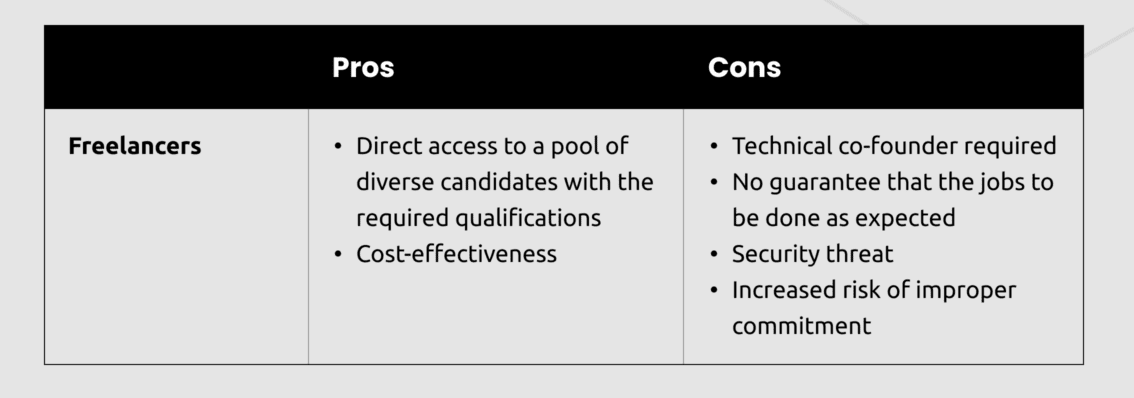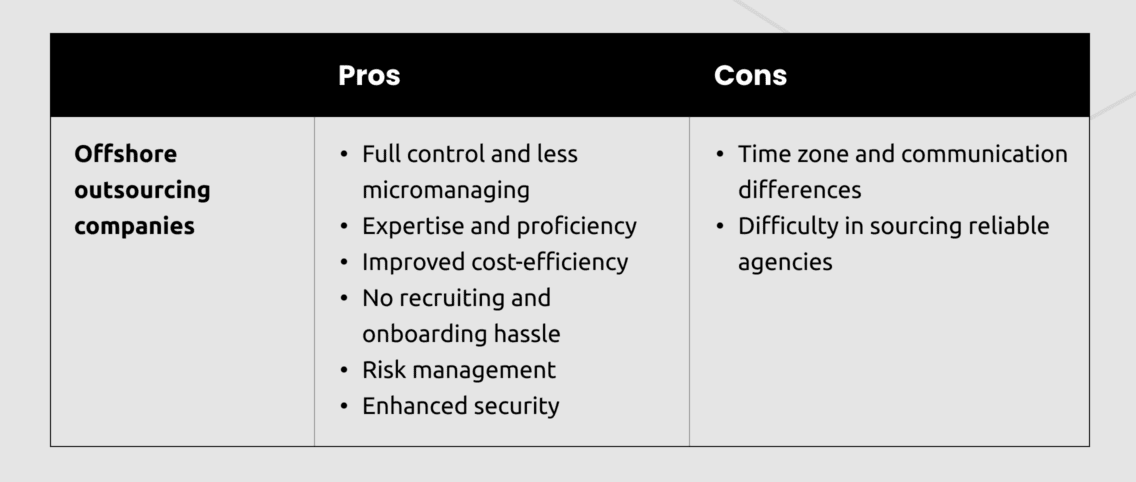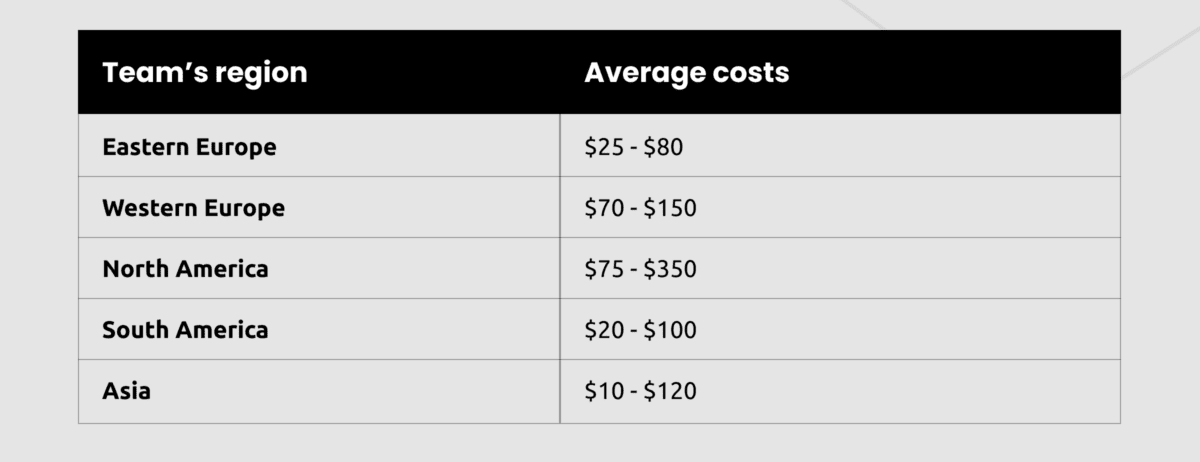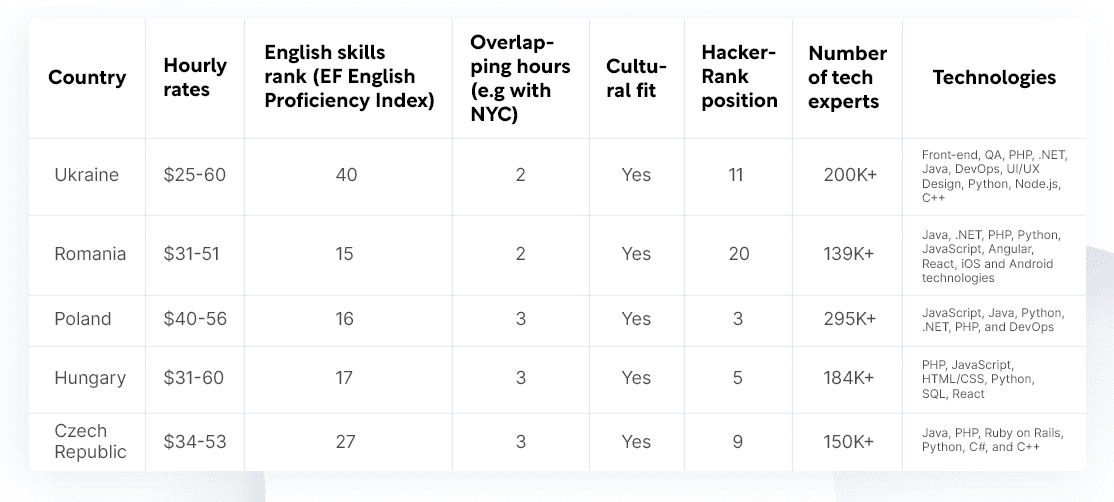Content
For businesses of all sizes, having a well-designed and functional website is crucial in our digital age. However, companies may lack in-house expertise, time, and resources to take on website development projects independently. This is where outsourcing website development comes into play. According to GrandViewResearch, the worldwide IT services market, including in-house and third-party services, was valued at $715.93 billion in 2020, with IT Outsourcing (ITO) alone accounting for $556.67 billion, or 77.75% of the market.
When the direction of the movement becomes clear, the next question arises: how much does it cost to outsource website development?
In this detailed guide, we’ll break down the cost components and provide valuable tips on how to cut outsourcing website development costs without sacrificing quality. So, whether you’re a startup or a large enterprise, this guide will help you make informed decisions and get the best value for your money.
When do you need to outsource website development?
Many business scenarios encourage senior executives to look for alternative ways to delegate the growing number of technical and other tasks to outsourcing teams. Before it comes to estimating costs, there are specific reasons first. Let’s review the most popular of them.
Lower development costs
One of the primary reasons why businesses choose to outsource website development is cost optimization. It’s not a secret that hiring in-house staff will require allocating more resources to recruitment, onboarding, and training. Moreover, as a business owner, you must cover the traditional costs associated with employment packages, such as taxes, salaries, office rent, and other social benefits. That’s why businesses consider outsourcing website development to reliable outsourcing partners who can deliver expected quality at a reasonable price.
Get access to qualified web developers
Lack of in-house expertise and technical staff is a typical driver for outsourcing web development projects. Outsourcing is a reasonable option if your company lacks the in-house knowledge or capabilities to build a high-quality website. An outsourced development team can provide deep domain expertise in various areas, such as UI/UX design, custom web and mobile development, technology consulting, and more. Moreover, if you face technology challenges, you can easily tap into the global pool of tech-savvy software specialists who will help you develop cutting-edge websites and gain a competitive advantage.
Scale your web project quickly
If you want to expand your online presence, outsourcing website development can help you quickly scale up your operations and long-term business growth. Regardless of your project’s stage, you can efficiently allocate required specialists on the go. In this scenario, you may swiftly scale your software solution or fill in development capacity gaps by hiring a trusted outsourcing firm that offers on-demand developers, designers, and technology specialists ready to become valuable assets to your in-house team.
Focus on core business priorities
A remote web development team can easily handle the technical and management tasks allowing you to focus on your business priorities. As a rule, a customer can be engaged more during first discovery calls when there is a need to discuss the project’s goals, tasks, and requirements. However, after agreeing on the issues, you can participate in the ongoing development process from time to time to check the progress or set further direction. An outsourced team is responsible for the rest of the tasks and activities. You can use this excellent opportunity to save time and focus on strategic business development.
Speed up time to market
An outsourced web development team can provide dedicated focus and expertise to the project at hand, which results in faster delivery times. Unlike long traditional hiring stages, outsourcing can help businesses minimize the time it takes to get started on a project and avoid costly delays that can significantly impact their revenue and time to market.
Types of website development outsourcing
There are various options for outsourcing website development available today, from hiring freelance developers to offshore outsourcing companies and local outsourcing companies. However, before calculating the cost of outsourcing website development, it’s essential to assess the pros and cons of each option to choose one that best suits your needs and budget.
Freelance developers


Freelance developers are independent experts who take on jobs as they come up. They often operate remotely and are typically paid either hourly or by the project.
For smaller projects, freelance developers are far more affordable but may not have the required competencies or industry knowledge of larger outsourced firms.
Also, under this model, you will need to put in your efforts to handle all the recruiting and onboarding, keep track of the freelancer’s work or hire a responsible manager to do these tasks for you.
Upwork and Fiverr are the most popular platforms for finding and hiring freelance developers. The average hourly rate for a freelancer starts from $15 per hour, depending on their skills, location, and experience.
Offshore outsourcing companies


Offshore outsourcing companies are located in other countries and offer website development services at a lower cost than local companies. These companies can have a larger workforce and more resources than freelance developers, making them a good choice for larger or more complex web projects.
You can outsource website development at a lower cost in many regions, such as Northern, Central, and Eastern Europe and Asia. The average hourly rate for offshore outsourcing can vary from $25 to $100 per hour, depending on the region.
The average hourly rates for outsourcing based on different regions:
Eastern Europe: $25-$80
Western Europe: $50-$100
South-East Asia: $18-$50
China: $25-$200
India: $25-$50
However, the main rule here is to perform an in-depth search for offshore agencies to hire a team of true specialists capable of delivering on quality, on time, and within the budget allocated. Read our in-depth guide to help you make your choice wisely:
Local outsourcing companies


Local outsourcing companies are situated in the same country as the client. It can be a local web development company in your city that you can visit and communicate with in person. They may offer more personalized service than offshore outsourcing companies but may come at a higher cost. For example, the average annual salary for a US-based senior developer is around $125,000.
Factors affecting the cost of outsourcing website development
There are many factors influencing the cost of outsourcing website development. By getting familiar with these factors, businesses can make more informed decisions and effectively manage website development costs.
Type of website
The type of website usually plays a crucial role in determining the final project cost. Depending on the website type, whether a landing page, blog website, or marketplace, the price will also differ by individual website differences, the complexity of features, the number of third-party integrations, etc.
For example, a simple website with a few pages of content will cost less than a complex e-commerce website with multiple product categories, payment gateway integration, and a custom shopping cart.
The complexity of website design and functionality
The number and diversity of features, the number of screens, and the number of design components are critical determinants of how much it costs to outsource website development. A more complex design and functionality will require more time, resources, and development efforts.
For example, a website with a basic layout and standard functionality will cost less (e.g., $30,000) than a website with custom animations, interactive features, and complex data visualization (e.g., $50,000+). That’s why the budget estimate for every single project differs.
Expertise and location of the outsourcing company
The website outsourcing cost may vary depending on the firm’s experience and location. Companies with higher expertise and located in more expensive regions may charge more.
For instance, a business offering web development services in San Francisco, California, will typically charge more than one in a smaller Indian town. Or, the cost of the same project ordered from an Eastern European remote outsourcing team can be half the price it would cost from a team in the United States with the same level of expertise.
In any case, we’ve already mentioned there are offshore outsourcing regions where you can find reputable experts providing high-quality web development outsourcing services with a reasonable quality-to-cost ratio.
Project timeframes and deadlines
The amount of time set for the project and the deadlines may impact the cost. Projects with a short deadline may ultimately cost more. For instance, if a client asks for a website to be finished in a week, the outsourcing firm might have to allocate more resources to meet the deadline, resulting in higher costs.
The number of third-party integrations
If you opt for hiring remote web developers, consider the number of third-party integrations in the cost. For example, integrating a website with a CRM, ERP, financing systems, payment gateway, or social media platform can add extra weight to the overall cost. Moreover, some third-party tools and software may require a license to be used on the website or be additionally customized, resulting in higher costs for further maintenance and support.
Available budget
The scope and functionality of the website may change depending on the available project’s funding. For instance, a customer on a tight budget might have to prioritize some features above others. That affects the final cost calculations. However, in such a case, the risks of website failure can also increase as there can be certain tech limitations.
Engagement model
The project’s overall cost may vary depending on the engagement type chosen, such as dedicated team or staff augmentation, as well as pricing models hourly rates or fixed-based.
The dedicated software development team model is well-suited for long projects involving a significant work scope.
IT staff augmentation is a great model for short-term projects or bridging specific skill gaps in your current team. This model is more cost-effective since you only pay for the services provided by the augmented staff.
As for the pricing models, an hourly rate pricing plan may be more expensive if the project requires significant modifications and updates. In contrast, a fixed-price model may be more affordable in this case.
Additional costs
The cost of outsourcing website development may increase due to additional expenses like hosting, domain registration, and ongoing maintenance. For instance, if a client doesn’t already have hosting or a domain name, the outsourcing firm could have to cover these expenses on their behalf, which would incur additional costs. Or, if you need special tech assistants to fine-tune your website functions, ensuring everything works well – that will also entail extra charges.
How much does it cost to outsource website development by website type?
The type of website is one of the factors most affecting the cost of outsourcing website development. So, how much does it cost to outsource website development? Let’s review each specific type in more detail.
Business-specific website
Typically, business-specific websites focus on brand promotion and showcasing services and products. Private entrepreneurs may want to promote their services in numerous areas, including photography, cooking, tattoo making, etc. Or, it can be mid-sized businesses and enterprises with individual requirements, website structure, and the number of web pages and functionality.
Typically, private entrepreneurs ask us to develop web pages: about the company, services, contacts, blogs, and testimonials. The average cost of outsourcing the development of a business-specific website starts from $30,000
Mid-size businesses and enterprises often have specific requirements for security, features, and pages. In such cases, website development can be much cheaper.
E-commerce website
In the global e-commerce niche, websites are mainly needed to sell products or services online. Such a website can have thousands of pages, features, and complicated functionality. Typical examples of e-commerce websites are eBay, Amazon, Shopify, etc.
Important features that can be required for e-commerce websites are plentiful. Still, the must-haves are product categories and filters, a shopping cart, a checkout process, and payment gateway integrations.
The cost of e-commerce website development outsourcing starts from $30,000, depending on the platform’s size and complexity. Also, it is essential to keep architecture, performance and security characteristics, mobile compatibility, and tech stack choice in mind when calculating the total cost. Such peculiarities may also demand considerable investments.
SaaS website
A SaaS, also known as a “Software as a Service” website, is designed to provide online software or services to users. SaaS websites require a compelling design aligned with up-to-date trends, robust cloud systems and architecture, high data protection, and compliance with region-specific applicable laws and regulations.
Typical examples of SaaS apps are cloud storage (Google Drive, Dropbox), CRM software (Salesforce), video conferencing solutions (Zoom), collaboration software (Slack, Google Workspace, Office 365), etc. Key features that may be needed for a SaaS website include user registration and management, subscription or membership-based model, and third-party service integrations.
On average, the cost of outsourcing website development of a SaaS solution starts from $30,000, depending on the complexity of the software.
Marketplace website
Marketplace websites are designed to connect buyers and sellers online. The product listings and sellers are significant differences between a marketplace and an e-commerce website. In a marketplace, multiple sellers have an inventory of their goods. The e-commerce website has products from the same seller divided into different categories.
Well-known examples of marketplace websites are Amazon, eBay, and Walmart. Typical features that may be needed for a marketplace website include user registration and management, product listings, search and filtering options, communication tools, order processing, and payment gateway integrations.
On average, the cost of outsourcing the development of a marketplace website starts from $25,000 and above.
Blog website
Websites for blogs are created for posting articles, news, and other types of content online. Typically, they have a lot of content, require minimalistic design and SEO optimization, and don’t requires complex functionality.
Common examples of blog websites are Pando, Microsoft Stories, and Fubiz. Key features that may be needed for a blog website include a content management system, comment sections, and social media integrations.
Landing page
A landing page is a single-page website designed to promote a specific product, service, or offer. Such landing pages are not overloaded with content. They are mostly needed to increase users’ interests and motivate them to purchase something or download a file.
Common examples of landing pages with great animation are Surprise and Agora. Critical features needed for a landing page include a clear call to action, a contact form, and a simple design.
How much does it cost to outsource website development by website complexity?
Another factor that affects the cost of outsourcing website development is the complexity of website functionality and design. Below, you can find a detailed description of each level of complexity.
Basic websites
Websites with basic complexity typically consist of a few pages and basic functionality such as contact forms and image galleries. Such a website can be up to 15 pages with a simple database on the backend and custom animations on the front end.
Also, such a complexity type requires a minimum number of specialists involved:
- 1 project manager
- 1 WordPress or full-stack developer
- 1 UI/UX designer
- 1 QA engineer
The cost of outsourcing website development for basic websites can vary depending on the outsourcing company and location, but the average cost can range from $30,000 and lasts at least 2 months.
Medium-complexity websites
Medium-complexity websites typically have more advanced functionality, such as e-commerce features, custom forms, and integrations with third-party services. The average-complexity website can be up to 50 pages long, with custom UX/UI design, a complex database, third-party integrations, a custom frontend with cutting-edge animations, and SEO optimization. Large corporate websites and cloud-based solutions are typical examples of websites with medium complexity.
Such complexity requires engaging the following specialists in your team:
- 1 Project Manager
- 1 Business Analyst
- 1-2 UI/UX designers
- 1 Senior Backende developer
- 1 Senior Frontend developer
- marketing team
For medium-complexity websites, the outsourcing website development cost can start from $35,000-$40,000, depending on the features needed and the outsourcing provider’s experience level. The development takes at least 4-6 months.
Complex and large websites
Complex and large websites are typically large-scale projects that require advanced functionality such as custom software development, complex databases, higher infrastructure, and integrations with multiple third-party services. The complex website typically includes massive databases, complex front-end interactions, top-notch UI/UX design, and a maintenance team.
Good examples of complex and large websites are Canva and LinkedIn. The time to develop a complex website is about 6-12 months, depending on the number and complexity of features.
The cost of outsourcing website development for complex and large websites starts from $50,000, depending on the scope and complexity of the project, navigation, privacy measures, and complexity of network protocols.
How much does it cost to outsource website development by collaboration type?
When it comes to considering the cost of outsourcing website development to reputable outsourcing agencies, keep in mind that the type of collaboration will also affect your budget.
IT staff augmentation
The IT staff augmentation model involves outsourcing individual IT professionals to supplement the in-house team’s skills and expertise. This type works well for businesses with in-house teams but needs to engage new talents. Using this collaboration type, you don’t need to commit to a traditional long-term employment model and cover different expenses for office rent, taxes, and other social benefits, thus decreasing the overall development costs.
Under the IT staff augmentation model, you can engage tech specialists your in-house team lack: web developers, UI/UX designers, and QA testers.
The average cost of outsourcing website development through IT staff augmentation starts from $30 to $50 per hour.
Dedicated team
By hiring a dedicated software development team, you may entrust a team of professionals with vast experience in your field with the technical implementation of your website idea.
Under the dedicated team collaboration model, you can hire a ready web development team to create a new website from scratch, redesign an existing website, or develop a web application.
The cost of a dedicated team can vary depending on the outsourcing company’s location and expertise, with rates ranging from $25 to $100 per hour.
How much does it cost to outsource website development by the team’s region?


The outsourcing website development cost varies from country to country. So, how much does it cost to outsource website development? Let’s compare the rates in the most popular outsourcing regions.
Eastern Europe
Outsourcing website development to Eastern Europe is a popular choice due to the region’s high-quality work, affordable rates, and proximity to European time zones. The main hotspots of Eastern Europe website outsourcing are Ukraine, Poland, and Romania.
The average hourly rate for outsourcing website development in Eastern Europe is around $25 to $80 per hour.


Important Criteria to Follow When Choosing an IT Outsourcing Destination in Eastern Europe
More information on Eastern Europe outsourcing, you can find here: Why Should You Outsource to Eastern Europe? (Price, Pitfalls, and Mistakes)
Western Europe
Website development rates in Western Europe are higher due to the stable economy and high living costs. The main hotspots of Western Europe website outsourcing are Germany, France, the Netherlands, and the United Kingdom.
The average hourly rate for outsourcing website development in Western Europe is around $70 to $150 per hour.
North America
Website development rates in North America can be more expensive than in other regions, but it offers high expertise and quality. The main hotspots of website outsourcing in North America are the United States and Canada.
The average hourly rate for outsourcing website development in North America is around $75 to $350 per hour.
South America
Outsourcing web development rates across South America can offer a cost-effective solution. However, finding an outsource web developer is challenging since you cannot guarantee they perform the work in line with quality standards. The leading outsourcing hubs are Brazil, Argentina, Peru, and Colombia.
The average hourly rate for outsourcing website development in South America is around $20 to $100 per hour.
Asia
Outsourcing website development to Asia can be a cost-effective solution due to the region’s lower cost of living and salaries. Examples of Asian countries include India, the Philippines, and Vietnam. However, it’s essential to understand that although prices are low, there are also risks of low-quality work, and you will need to have references or some time to find high-quality web development services.
The average hourly rate for outsourcing website development in Asia is around $10 to $120 per hour.
Tips to reduce the cost of outsourcing website development
With extensive web development experience for projects of all sizes and complexity, we’ve compiled a list of practical money-saving tips. Following it, you can reduce the cost of outsourcing website development in the blink of an eye.
Define project requirements clearly
First, ensure your project scope is clear and describes your specific goals for your website. It will make it easier for your outsourced staff to understand your requirements and offer an accurate cost estimate. The details you should provide are the type of website, business goals, targeted user group, available budget, and deadlines. Preventing misunderstandings early result in the expected outcomes and fewer resources and efforts allocated from your side.
Research and compare outsourcing companies
Before you start looking for the perfect web development partner, you should first make a list of criteria that you will use to select your vendor. They could include prior work experience, the portfolio of successful projects, geographic location, hourly rates, and the company’s reputation and core principles. As a result, you can research and compare a list of outsourcing companies and choose the one most fitting your needs and available budget. We recommend searching on trusted online platforms such as Clutch, GoodFirms, or LinkedIn. These online platforms have enough credible information allowing you to check the company’s ratings regarding cost, quality, and schedule, read honest customer reviews, and understand the company’s focus.
Break the project into milestones
Breaking the project into smaller milestones and setting clear deadlines help manage the project timeline and avoid unexpected costs. In addition, it can confirm that the project is progressing according to plan and allow improvements to be made before moving on to the next stage. The sooner corrections are made, the greater the chance of avoiding costly website rework and reiterations. For example, reworking design gaps when the features are already implemented is more expensive.
Leverage robust technology stacks
The choice of technology stacks can significantly affect the cost of outsourcing website development. When choosing to collaborate with a specific company, you should ensure the tech stack they use will help you to solve your short-term needs (e.g., high-performing functionality) and long-term needs (e.g., maintenance and updates) directly.
Provide clear and timely feedback
Providing timely feedback and answering any questions or concerns from the outsourcing company can help avoid delays and additional costs. Thus, developing transparent communication channels and offering feedback quickly and constructively is critical. A communication plan can include methods of contact, a plan to solve possible misunderstandings, setting quality standards, deadlines, and other relevant details.
Optimize communication
Good communication between the outsourcing provider and the customer is essential for completing the project and optimizing costs. Clear communication channels help avoid misunderstandings and ensure the project is completed within the specified timeframe and budget.
How to select an outsourcing team without any mistakes?
Mistakes in the selection of an outsourcing team can have significant consequences for a business. However, by recognizing these errors and implementing appropriate solutions, organizations can mitigate risks and ensure successful collaborations. Here are some common mistakes and strategies to rectify them:
Problem #1: Insufficient research. One of the most prevalent mistakes is inadequate research before choosing an outsourcing team. Organizations may rush into partnerships without thoroughly evaluating the vendor’s reputation, expertise, and track record.
Solution: To overcome this, conduct comprehensive due diligence. Scrutinize their portfolio, client testimonials, and online reviews. Seek referrals and engage in thorough interviews to gauge their capabilities and compatibility with your business needs.
Problem #2: Lack of clear objectives. Failing to establish clear objectives and expectations can lead to miscommunication and unsatisfactory results. It is crucial to define specific goals, timelines, deliverables, and quality standards in the outsourcing contract.
Solution: Regularly communicate and monitor progress to ensure alignment. By setting realistic and measurable objectives, both parties can work towards a shared vision.
Problem #3: Ignoring cultural compatibility. Neglecting cultural compatibility can hamper effective collaboration and communication. Different work cultures, time zones, and communication styles may impact project outcomes.
Solution: Mitigate this by assessing cultural fit during the selection process. Look for vendors who align with your organizational values, understand your work culture, and can seamlessly integrate into your team.
Problem #4: Overlooking scalability and flexibility. Businesses often neglect to consider long-term scalability and flexibility when selecting an outsourcing team.
Solution: It is essential to evaluate the vendor’s ability to accommodate future growth, adapt to changing business needs, and provide scalable solutions. Choose partners who can handle increased workloads, offer flexible contracts, and possess the necessary expertise to support your evolving requirements.
Problem#5: Failure to protect intellectual property. Inadequate measures to protect intellectual property can result in data breaches and compromise a company’s competitive advantage.
Solution: Ensure that the outsourcing team adheres to robust data security and confidentiality protocols. Sign non-disclosure agreements (NDAs) and specify data protection measures in the contract. Regularly monitor and audit their security practices to safeguard sensitive information.
How much does it cost to outsource website development to RewiSoft?
RewiSoft is a reliable outsourcing partner with extensive web development experience in all types of web products and across many industries, including Real Estate, FinTech, Healthcare, and EdTech. We have been working with all businesses of any size, from startups to mid-size and large-scale corporations. Our portfolio includes websites and applications of the following types:
- E-commerce websites
- Marketplace websites
- SaaS apps
- Social networks
- Professional networks
- Tracking service software
- Online learning platforms
We can help you with the following:
- Custom web application services. Every step of the way, from project management and UI/UX design through software development, quality assurance, and maintenance and support, our skilled developers will collaborate with you. We use cutting-edge frameworks and technologies to build scalable, high-quality web apps that are customized to your needs.
- Full-stack development services. We offer project management, software development, UI/UX design, quality assurance, maintenance, and support. We provide specialized solutions to meet the unique needs of our customers.
- Front-end development services. The talented front-end developers at RewiSoft will collaborate with you to generate stunning, responsive designs that offer an outstanding user experience. Project management, UI/UX design, software development, and quality assurance are part of our front-end development services.
- Back-end development services. Using the latest frameworks and technologies, our team of skilled back-end engineers specializes in building dependable and scalable web applications. We offer comprehensive back-end development services that suit your requirements, ranging from project management and architecture design to software development, quality assurance, maintenance, and support.
- Web development consulting services. Our team of skilled consultants can offer growth strategy, technical know-how, and best practices to streamline your web development procedure and improve results.
- Progressive web application development services. Our team of talented developers can construct PWAs that function flawlessly across all platforms and devices and give consumers an app-like experience without requiring them to download and set up additional software.
How much does it cost to outsource website development: summary
The cost of outsourcing website development depends on the type of website, level of complexity, method of development, type of collaboration, and team location. Businesses can lower outsourcing costs by defining project requirements, investigating and comparing outsourcing companies, segmenting the project into phases, using robust technological stacks, providing accurate and helpful feedback, and improving communication.
With their impressive track record of successful projects and satisfied clients in our outsourcing firm, you can ensure your project is in good hands.








